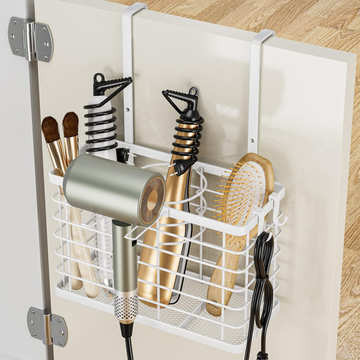Master your 4C hair routine with expert tips and must-have products for ultimate curl definition
4C hair is a masterpiece of texture and versatility, but keeping those tight, beautiful curls hydrated and defined can feel like a challenge. If you’ve been searching for the perfect 4C hair routine, you’re not alone. From dryness to shrinkage, this curl type requires some extra attention to thrive.
With the right techniques and hair products for 4C hair, you can achieve curls that are moisturized, defined, and thriving. This article will explore everything from cleansing and conditioning to styling and night care, helping you craft a personalized routine that celebrates your curls every step of the way.
Understanding curl types: Where 4C fits in
Curl patterns range from 2A to 4C, with each type requiring specific care to thrive. Knowing your curl type helps you select products and routines tailored to your hair’s unique needs.
– Type 2 (Wavy): Loose, S-shaped waves with minimal volume.
– Type 3 (Curly): Defined ringlets with bounce, ranging from loose to tight curls.
– Type 4 (Coily): Tight, springy coils that include 4A, 4B, and 4C hair.
– 4A: Defined, S-shaped coils with a visible curl pattern.
– 4B: Z-shaped curls with less definition and more shrinkage.
– 4C: Tight, densely packed coils with little visible curl pattern. Often prone to dryness and shrinkage.
4C hair stands out for its versatility and beauty, but its unique structure makes it more fragile. Understanding these traits ensures your routine works with your hair, not against it.
What makes 4C hair unique?
4C hair is characterized by its tight coils and zigzag pattern, which naturally creates stunning volume and texture. However, these tight curls can make it more prone to dryness and shrinkage. With little natural oil traveling down the hair shaft, it’s no wonder 4C hair craves extra hydration.
Another defining feature of 4C hair is shrinkage—sometimes up to 75% of its actual length. While this is a sign of healthy elasticity, it can make achieving certain styles or seeing growth progress a challenge. The key to tackling these concerns is building a routine that works with your hair’s unique properties rather than against them.
Understanding your hair’s porosity is also vital. Low porosity hair may need lightweight moisturizers to avoid product buildup, while high porosity hair will benefit from richer creams and oils to seal in moisture. Recognizing these needs can set the foundation for healthy, thriving curls.
The ultimate 4C hair care routine
Caring for 4C hair requires a carefully tailored routine that emphasizes hydration, moisture retention, and strength. This step-by-step guide ensures your curls are nourished, defined, and thriving at every stage.
Cleansing for healthy curls
A clean scalp is essential for healthy hair growth and overall hair health. However, 4C hair needs a gentle approach to cleansing to avoid stripping its natural oils. Opt for sulfate-free shampoos or co-washes that cleanse effectively while preserving moisture.
– Wash every 7–10 days or as needed to avoid product buildup.
– Gently massage shampoo into your scalp with your fingertips, then work the lather through your strands. Follow with a moisturizing conditioner to restore softness.
Product recommendations
– Satin Hydration Sulfate-Free Shampoo: Infused with aloe vera, this shampoo gently cleanses while keeping curls hydrated and soft.
– Moisture Max Shampoo: Perfect for removing buildup without drying out your strands, ideal for regular use.
– Co-Wash Cleanse Conditioner: A 2-in-1 solution that cleanses and conditions, reducing the need for separate steps on wash days.
Deep conditioning and detangling
Deep conditioning is the backbone of any 4C hair routine, restoring moisture, elasticity, and strength. Pair this step with careful detangling to prevent unnecessary breakage.
– Use a deep conditioner weekly to replenish moisture.
– Section hair into manageable parts, apply the conditioner generously, and detangle with a wide-tooth comb or your fingers, starting at the ends and working up. Cover with a shower cap for 20–30 minutes for maximum penetration.
Product recommendations
– Revive & Restore Deep Conditioner: Packed with papaya oil and coconut milk, this conditioner provides intense hydration and improves manageability.
– Intensive Curl Masque: A nourishing treatment that combats dryness and enhances curl definition, perfect for weekly deep conditioning.
– Curly Hair Detangler: A lightweight spray that makes detangling a breeze, reducing knots and tangles.
Moisturizing and sealing
Keeping 4C hair moisturized is a game changer for reducing dryness and breakage. The LOC (Liquid, Oil, Cream) method is a reliable technique to lock in moisture for days.
1. Start with a water-based leave-in conditioner to hydrate the hair.
2. Apply a natural oil to seal in the moisture and add shine.
3. Use a thick cream to seal the cuticle and provide long-lasting protection.
Product recommendations
– Moisture Lock Leave-In Conditioner: Lightweight and hydrating, this conditioner preps your curls for the LOC method.
– Hair Oil: Argan oils can seal in moisture and add a beautiful sheen.
– Whipped Curl Cream: Ideal for sealing the hair cuticle and providing soft, defined curls that last all day.
Protein treatments
While moisture is critical, 4C hair also needs protein to maintain its strength and elasticity. Regular protein treatments can help repair damage and prevent breakage, especially if your hair feels limp or overly soft.
– Apply a protein treatment every 4–6 weeks or as needed.
– Use a protein-rich mask after cleansing and follow with a deep conditioner to balance moisture.
Product recommendation
– Strength Repair Protein Conditioning Mask: Fortified with keratin and silk proteins, this mask restores elasticity and reinforces weak strands.
Styling and definition
Styling 4C hair is all about enhancing its natural beauty while minimizing damage. Protective styles and curl-defining techniques like twist-outs or braid-outs work beautifully with the right products.
– Moisturize and seal hair before braiding or twisting to maintain hydration and reduce tension.
– Use styling creams or gels to define curls and reduce frizz.
Product recommendations
– Curl Definition Cream Gel: Perfect for twist-outs and braid-outs, this product provides hold while keeping curls soft.
– Smooth & Define Styling Gel: Adds shine and definition without leaving hair crunchy or stiff.
Styling for defined curls
Styling 4C hair is an art form that celebrates its natural beauty while ensuring it stays healthy and manageable. The key to achieving defined curls lies in preparation, technique, and using the right products. Here’s how to master your styling routine:
Protective styles that work
Protective styles are essential for 4C hair. They minimize daily manipulation, shield your strands from environmental stress, and help retain moisture. These styles also offer versatility, allowing you to experiment while promoting hair health.
Popular protective styles
– Braids: Box braids, cornrows, and knotless braids offer long-lasting protection and a sleek look.
– Twists: Two-strand twists or flat twists are easy to maintain and great for preserving length.
– Buns: Low buns and puff buns keep hair out of the way while reducing tension on the scalp.
– Wigs and extensions: Perfect for switching up your look while protecting your natural hair underneath.
Preparation tips
– Ensure your hair is thoroughly moisturized and sealed before styling.
– Use edge control products for a polished look, especially along your hairline.
Product recommendations
– Hydrate Control Gel: Tames edges without flaking or leaving a greasy residue.
– Curl Stretch Pudding: Adds moisture and helps elongate curls in twists or braids.
Curl definition techniques
Defining 4C curls is all about enhancing your natural texture while reducing frizz. Twist-outs, braid-outs, and shingling are some of the most effective methods to bring out your curl pattern. Keep reading for a step-by-step guide of popular techniques.
1. Twist-Outs
– Start with clean, moisturized, and detangled hair.
– Apply a curl cream or gel to a small section.
– Divide the section into two strands and twist them together tightly.
– Allow the twists to dry completely, then unravel carefully for defined, bouncy curls.
2. Braid-Outs
– Similar to twist-outs but using three strands for each section.
– Creates a more stretched, wavy curl pattern with added volume.
3. Shingling
– Work a defining gel or cream into wet hair section by section.
– Use your fingers to smooth and elongate each curl.
– Allow to air dry or use a diffuser for best results.
4. Finger Coiling
– Apply a generous amount of curl cream to damp hair.
– Take small sections of hair and twirl them around your finger until the curl forms.
– Let the hair dry naturally or set it with a diffuser.
5. Wash-and-Go
– Apply a leave-in conditioner and curl gel to wet hair.
– Rake the products through your strands with your fingers.
– Air dry or diffuse for soft, defined curls with minimal effort.
Tips for styling success
– Work in sections. Dividing your hair into sections ensures even product distribution and better control.
– Avoid overloading on products. Too much product can weigh down your curls and lead to buildup. Use a light hand and build up as needed.
– Dry completely. Ensure your hair is fully dry before unraveling twist-outs or braid-outs to avoid frizz.
– Seal with an oil. After styling, seal your hair with a light oil to lock in moisture and add shine.
Product recommendations for styling
– Curl Definition Cream Gel: Enhances curl definition while providing soft hold, perfect for twist-outs and braid-outs.
– Smooth & Define Styling Gel: Provides firm hold without leaving hair crunchy, ideal for shingling or wash-and-go styles.
– Hydrating Curl Butter: A rich, nourishing cream that adds moisture and definition to protective styles.
– Frizz-Free Shine Spray: Adds a glossy finish to your curls while taming flyaways.
Understanding hair porosity and its role in a 4C hair routine
Hair porosity refers to your hair’s ability to absorb and retain moisture, and understanding this can make a big difference in how well your products and techniques work.
Types of porosity
1. Low porosity: Hair cuticles are tightly closed, making it harder for moisture to penetrate. This can lead to product buildup if heavy oils or creams are used. Use lightweight, water-based products and apply heat (like a warm towel or cap) during deep conditioning to open the cuticle and allow better absorption.
2. Medium porosity: Hair absorbs and retains moisture well. Products tend to work effectively without much adjustment. Stick to a balanced routine with regular conditioning and moisturizing.
3. High porosity: Hair cuticles are raised, meaning moisture enters easily but escapes just as quickly. This often results from damage or over-manipulation. Opt for thicker creams and oils to lock in moisture, and incorporate protein treatments to strengthen your strands.
How to determine your hair porosity
Perform the water float test by dropping a clean strand of hair into a glass of water.
– Floats on top = Low porosity
– Suspends in the middle = Medium porosity
– Sinks to the bottom = High porosity
Customizing your routine to match your porosity will help you achieve healthier, more hydrated curls.
Common myths about 4C hair care
There’s a lot of misinformation about 4C hair that can hold people back from embracing and properly caring for their curls. Let’s bust some common myths:
Myth 1: 4C hair doesn’t grow.
Truth: 4C hair grows at the same rate as any other hair type, but its tight coils make length retention more challenging. Consistent moisturizing, protective styling, and low manipulation are key to retaining growth.
Myth 2: Defined curls aren’t achievable for 4C hair.
Truth: Every hair type, including 4C, has the potential for curl definition. Techniques like twist-outs, shingling, and finger coiling can enhance natural curl patterns, and the right products help bring out the best in your hair.
Myth 3: 4C hair is too fragile for frequent washing.
Truth: Washing 4C hair with sulfate-free shampoos or co-washes is perfectly fine and even beneficial. The focus should be on using moisturizing products and avoiding overwashing that strips natural oils.
Myth 4: You have to spend a fortune to maintain 4C hair.
Truth: While some premium products are worth the investment, plenty of affordable options and DIY treatments can keep your hair healthy without breaking the bank.
Seasonal care tips for 4C hair
The needs of 4C hair can change with the seasons, so adapting your routine ensures your curls remain healthy and hydrated year-round.
Winter Tips
– Cold air and indoor heating can strip moisture from your hair. Focus on heavy moisturizers and protective styles to combat dryness.
– Use a thicker oil like castor oil for sealing and a leave-in conditioner for extra hydration.
– Consider wearing hats lined with silk or satin to prevent friction and frizz.
Recommended products
Nourishing Hair Butter: Keeps hair moisturized and protected from the harsh cold.
Silk-Lined Beanie: Protects hair while keeping you warm.
Summer tips
– High humidity and sun exposure can lead to frizz and dryness. Incorporate lightweight, hydrating products and protect your hair from UV rays.
– Rinse your hair with water or a leave-in conditioner after swimming to remove chlorine or saltwater.
Recommended products
– Hydrating Curl Refresher Spray: Formulated to keep curls defined and hydrated in humid conditions.
– UV Protection Hair Mist: Designed to help shield your strands from sun damage.
Spring and fall tips
– These transitional seasons often bring inconsistent weather. Maintain a balanced routine with regular deep conditioning and a focus on moisture retention.
Adjusting your hair care routine with the seasons will keep your 4C curls thriving no matter the weather.
Make your curls work with you, not against you
From cleansing and deep conditioning to protective styling and defining your curls, every part of your 4C hair routine matters. Each step is like a little boost of love for your hair, helping it stay healthy, hydrated, and beautifully defined. Using products that match your hair’s porosity and seasonal needs ensures it gets exactly what it craves, even when things get tricky.
It’s also worth remembering that 4C hair care isn’t a one-size-fits-all deal. Your journey might involve some trial and error—testing out techniques, swapping products, and figuring out what works best for you. Whether you’re nailing a twist-out, rocking a wash-and-go, or soaking up a deep conditioning session, every moment strengthens your connection with your natural hair.
And let’s not forget—embracing your 4C hair is about shaking off the myths and misinformation that might’ve held you back. Your hair grows, it thrives, and with the right care, it can be everything you want it to be. Most importantly, your hair is a reflection of your identity and uniqueness, something to be appreciated throughout your journey.





